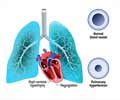A subgroup of heart cells activate gene programmes related to heart cell division, uncovering the gene expression heterogeneity of diseased heart.
Highlights
- Unlike other cells, heart cells do not have the ability to regrow. This makes heart attack and heart failure severe and debilitating. //
- A unique subpopulation of heart cells in diseased hearts activate gene programmes related to heart cell division.
- Long non-coding ribonucleic acid (ncRNA) regulates genes controlling and the ability of heart cells to undergo repair or regeneration.
A unique subpopulation of heart cells in diseased hearts activate gene programmes related to heart cell division, uncovering the gene expression heterogeneity of diseased heart cells for the first time.
In addition, they also found the "brakes" that prevent heart cells from dividing and thus self-healing. Targeting these "brakes" could help trigger the repair and regeneration of heart cells.
"There has always been a suspicion that the heart holds the key to its own healing, regenerative and repair capability. But that ability seems to become blocked as soon as the heart is past its developmental stage. Our findings point to this potential block that when lifted, may allow the heart to heal itself," explained A/Prof Roger Foo, the study's lead author.
"In contrast to a skin wound where the scab falls off and new skin grows over, the heart lacks such a capability to self-heal, and suffers a permanent scar instead. If the heart can be motivated to heal like the skin, consequences of a heart attack would be banished forever," added A/Prof Foo.
Executive Director of GIS, Prof Ng Huck Hui added, "This cross-institutional research effort serves as a strong foundation for future heart studies. More importantly, uncovering barriers that stand in the way of heart cells' self-healing process brings us another step closer to finding a cure for one of the world's biggest killers."
- A/Prof Roger Foo et al., Repairing damaged hearts with self-healing heart cells, Nature Communications (2017) http://dx.doi.org/10.1038/s41467-017-00319-8.
Source-Medindia
















